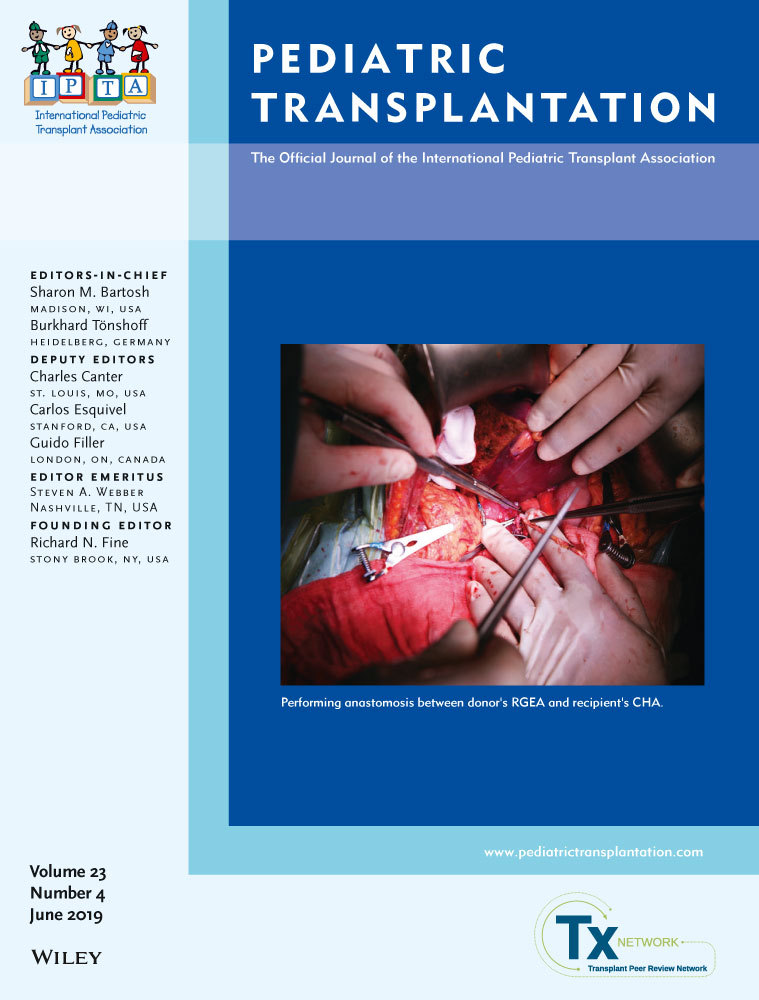Renal function after combined liver-kidney transplantation: A longitudinal study of pediatric and adult patients
Abstract
It has been proposed that the liver protects the kidney in CLKT. However, few studies have examined long-term renal function after CLKT and contrasted renal function of CLKT patients to KT patients beyond one year after transplantation. We studied long-term renal function of CLKT patients and compared renal function of CLKT patients to KT patients between one and five years after transplantation. Patients who underwent CLKT between 1993 and 2011 were included (n = 34; 11 children and 23 adults). Ninety-six (27 children and 69 adults) KT patients were selected as controls. GFR was estimated (eGFR) and measured (mGFR) with 51Cr-EDTA clearance. Mean mGFR was 63 at one and 70 at ten years after pediatric CLKT. Mean eGFR was 75 at one and 50 at ten years after adult CLKT. Difference in mean mGFR between pediatric CLKT and KT patients was 8 (95% CI −7 to 23) and 11 (95% CI −4 to 26) at one and five years after transplantation, respectively. Difference in mean eGFR between adult CLKT and KT patients was 8 (95% CI −5 to 20) and 1 (95% CI −10 to 12) at one and five years after transplantation, respectively. Longitudinal changes in GFRs were somewhat similar in CLKT and KT patients in both age-groups but pediatric CLKT patients had on average higher GFRs than pediatric KT patients. In long-term follow-up, renal function remains stable in pediatric CLKT patients but declines in adult CLKT patients.
CONFLICT OF INTEREST
JMK has received personal grants for a PhD thesis from the Sigrid Juselius Foundation, the Finnish Medical Foundation, the Finnish Medical Society Duodecim, the Mary and Georg C. Ehrnrooth Foundation, the Finnish-Norwegian Medical Foundation, the Paulo Foundation, Foundation for Pediatric Research, the Finnish Transplantation Society, the University of Helsinki, and salary for PhD thesis from the University of Helsinki and the Hospital District of Helsinki and Uusimaa.




